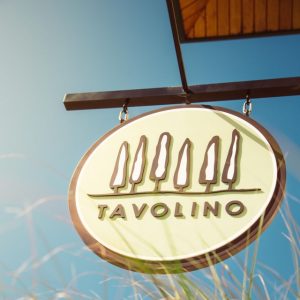Fast Fashion: Dark Truths Behind a Global Industry
June 6, 2018
By Gabrielle Delgado
You walk into Forever 21 in the local mall and it is easy; you see the perfect top. It is just your style and is on trend. You look at the price and discover that it is the low cost of $3.90! It is a dream come true. Your wardrobe will be quickly stocked for summer. Most of us never question the extremely affordable prices of our favorite clothes, and how new apparel is rolling in and lining up on the racks almost everyday. But I am here to expose what many have studied deeply already: fast fashion.
What we don’t see when we enter stores like Forever 21, H&M, or Nike, is that these brands are producing these clothes in ways are not morally acceptable in any way. This topic is too vast to cover in one article, so I am merely breaking the surface with this simple yet chaotic fact: most of the brands we wear are corrupting the people who make them and the environment itself.
These brands among many others are mass producing their products in sweatshops, which are factories in developing countries such as Bangladesh, Cambodia, Thailand, Pakistan, Vietnam, and many more; if you look at the tag on your shirt, it is most likely that it says it is made from one of those countries. In these sweatshops, labor laws are either violated or barely enforced. This means that conditions, hours, and wages are corrupted and unfair. They are paid less than minimum wage (below living standards), often work up to eighteen hour shifts, and are physically and mentally abused by factory owners and managers. Women make up a high percentage of these workers; they have no choice but to deal with these horrible conditions due to the threat of extreme poverty.
Although inspectors come by to these factories to check that the laws are being followed, it is not an interrogation. The inspector will only spend one or two days inspecting the factory, and will usually spend most of the time looking over birth certificates and logged hours. Factories are often warned ahead of time that inspectors are coming, whereas either child labourers are hidden, workers are told to answer questions in a specific way, and many other quick fixes to cover the corruption. The big companies are ignoring these labor laws and allowing workers to be abused and exploited in order to pocket the money that would have been much more largely distributed to workers and to the safety of the factory structure.
One incident of this matter was the building collapse in Bangladesh in April 2013 that woke a few concerned shoppers up to look down and check the labels on their clothing. In the industrial suburb of Dhaka, 1,127 workers were killed at the Rana Plaza when the entire structure collapsed due to wrongly granted approval of the construction of the building by the mayor and Sohel Rana, the factory owner.
Even when unsafe conditions were noticed by the factory workers, higher officials ignored them and compelled them to start work nonetheless. This is just one example of a sweatshop that was exposed because of a terrible aftermath due to the hidden inner workings of corruption in the fast fashion world. In order to make cheaper and faster made apparel, innocent lives were cost.
Unfortunately, sweatshops are not the only hidden truth of the fast fashion industry; it has taken a toll on the environment as well. The three big damages caused by the industry are water pollution, use of toxic chemicals, and increasing levels of textile waste. These damages are cause and effect to one another; toxic chemicals are used to create vibrant colors and prints, in which textile dyeing is involved, which in turn has become the second largest polluter of clean water in the world. To start with textile waste, many fabrics are genetically modified and cannot biodegrade like they should. For example, the most popular and widely used fast fashion textile fabric is polyester.
If you walk into a TJ Maxx or a Marshalls, the majority of the apparel will either include or be fully made of polyester. Polyester is made from petroleum, a nonrenewable fossil fuel. When it is washed in washing machines, it sheds very small plastic fibers that add to the increasing levels of plastic in the ocean, which poses more and more of a threat to aquatic life. In addition, if small creatures such as plankton eat those microfibers, and a larger animal eats the plankton and so on until the food chain reaches us, we end up eating those toxic microfibers.
Another fabric that is often wrongly seen as ethical is cotton. When we see ‘organic cotton’ on a T-shirt, the automatic assumption is that it is real and pure, and for good reason. The industry is fooling us; ninety percent of cotton produced in the US is genetically modified. Genetically modified cotton is made to be resistant to pests, but by doing this, it utilizes large amounts of energy and toxic chemicals. Organic cotton should biodegrade over time, whereas synthetic fibers do not, which again adds more plastic waste to the earth. According to an article from the Organic Consumers Association, “In the U.S., it typically takes a third of a pound of toxic agricultural chemicals to produce a pound of cotton—that is, the amount of cotton it takes to make one T-shirt.” Cotton has become one of the most toxic crops on the planet.
You may now be feeling guilt thinking about the clothes that hang in your closet, but it is not entirely the consumer’s fault, considering shopping ethically and sweatshop-free is actually quite difficult in 2018. You will not find one purely ethical store in the Natick Mall (besides Patagonia, which is actually a very environmentally safe and ethical brand, yay!). Shopping ethically is expensive and hard to find; most purely good brands are solely online or in one popup across the country, and we are not at fault for that. The industry is what needs to change.
There are a lot of dark truths surrounding this topic, and there is no real upside besides the superficial joy of cheap shopping we consumers receive, but that is the truth. Fast fashion has taken over the industry, and the first step to ending the corruption is recognizing it. I hope that by informing the public of more about this issue, you will strive to shop ethically as well.
Sources:
- Organic Consumers Organization: https://www.organicconsumers.org/essays/beyond-monsantos-gmo-cotton-why-consumers-need-care-what-we-wear
- The Independent: https://www.independent.co.uk/life-style/fashion/environment-costs-fast-fashion-pollution-waste-sustainability-a8139386.html
- LA Times ‘The True Cost’: http://www.latimes.com/entertainment/movies/la-et-mn-true-cost-cheap-clothes-documentary-20150528-story.html
- Huffington Post: The Myth of the Ethical Shopper: https://highline.huffingtonpost.com/articles/en/the-myth-of-the-ethical-shopper/
- Bangladesh building collapse coverage: https://www.nytimes.com/2013/05/23/world/asia/report-on-bangladesh-building-collapse-finds-widespread-blame.html






